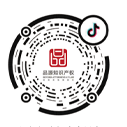Prior-use rights are a statutory exception under the Chinese patent system. They allow a third party who, before the filing date of a patent application, has already manufactured an identical product, practiced an identical process, or completed the necessary preparations for doing so, to continue implementing the technology within its original scale after the patent is granted.
Statutory Basis
Article 75(2) of the Chinese Patent Law provides:
None of the following shall be deemed patent infringement:
…(2) where, prior to the filing date of a patent application, any person has already manufactured the product or used the process that is the subject of the patent application, or has completed the necessary preparations for such manufacture or use, and continues such manufacture or use only within the original scale thereafter.
Judicial Interpretation
The Interpretations of the Supreme People’s Court on Several Issues Concerning the Application of Law in the Trial of Patent Infringement Disputes further clarifies the conditions for invoking a prior-use defense:
15. Where the defendant relies on prior-use rights based on illegally obtained technology or design, the People’s Court shall reject the defense.
Where any of the following circumstances exist, it shall be deemed that the “necessary preparations for manufacture or use” under Article 75(2) of the Patent Law have been made:
1. The principal technical drawings or process documents essential for implementing the invention or creation have been completed; or
2. The key equipment or raw materials essential for implementing the invention or creation have been manufactured or purchased.
The “original scale” refers to the production scale actually existing prior to the patent application’s filing date, or the production scale achievable with the existing production facilities or based on the existing preparations.
If, after the filing date, a prior user transfers or licenses the technology or design for which it had already made the necessary preparations or which it had already implemented, such subsequent implementation is not deemed to be within the original scale—unless the technology or design is transferred or inherited together with the original enterprise.
Conditions for a Valid Prior-Use Defense
To successfully invoke prior-use rights, all of the following must be established:
1. Lawful acquisition of technology. The technology must have been obtained through independent R&D or legitimate purchase. Technology obtained illegally—through plagiarism, theft or other improper means—is explicitly excluded.
2. Evidence of necessary preparations. The alleged infringer must provide concrete proof that substantial human and material investments were made before the filing date. Such evidence can include technical drawings, design plans, implementation schemes, factory premises, specialized equipment, key raw materials, or moulds.
3. Compliance with the original scale. The current production must remain within the production capacity that existed or was achievable with the facilities and preparations completed before the filing date. Expansion, transfer, or licensing beyond that scale after the filing date is not permitted, except in the context of a corporate transfer or merger.
The Beijing Municipal Higher People’s Court has further held that prior-use rights cover not only the acts of manufacturing and using a patented process as specified in the Patent Law, but also the use, sale, or offer for sale of the product manufactured or directly obtained by the process.
Importantly, the manufacture, use, or necessary preparations must occur within the territory of China. Manufacturing abroad and subsequently importing the product into China does not qualify as a prior act of implementation. The “equipment or moulds” referenced in this context means specialized equipment or moulds essential for implementing the technology, not general-purpose machinery for routine production.
To invoke the prior-use defense, the alleged infringer must prove the specific technical solution implemented before the patent filing date. This solution must be identical or equivalent to both the alleged infringing product and the patented invention. Where technical improvements were made after the patent filing date, the defense remains valid so long as the pre-filing technical solution can be proven identical or equivalent to the patented invention within the scope of the asserted claims.
Relationship with the Prior-Art Defense
Prior-use defense and prior-art defense are both common defenses against patent infringement allegations, but they differ in key respects:
1. Effect on patent rights. The prior-use defense is merely an exception to infringement and does not affect the validity of the patent. By contrast, a successful prior-art defense may call into question the patent’s validity.
2. Requirements. Prior-use requires proof that, before the patent filing date, the alleged infringer had already manufactured the product or practiced the process—or had made the necessary preparations to do so—within the original scale and through lawful acquisition of the technology. The prior-art defense instead requires showing that the alleged infringing technology forms part of the public domain prior art.
3. Comparative analysis. For prior-use, infringement must first be established: the allegedly infringing product is compared with the patented claims, and only if they are identical or equivalent is it then compared with the prior technology. The prior-art defense, however, allows direct comparison of the accused product or process with the prior art without first proving infringement.
4. Consequences. A successful prior-use defense permits continued implementation only within the original scale; any expansion may constitute infringement. By contrast, once technology is proven to be prior art, its implementation is not restricted.













 Home
Home Phone
Phone Message
Message






